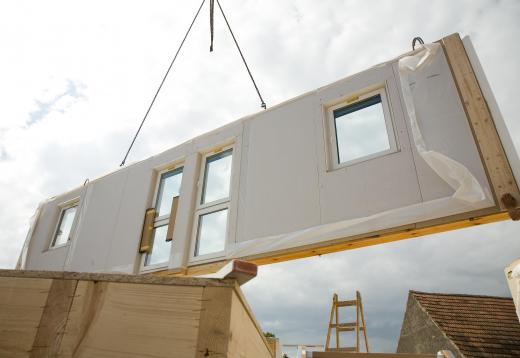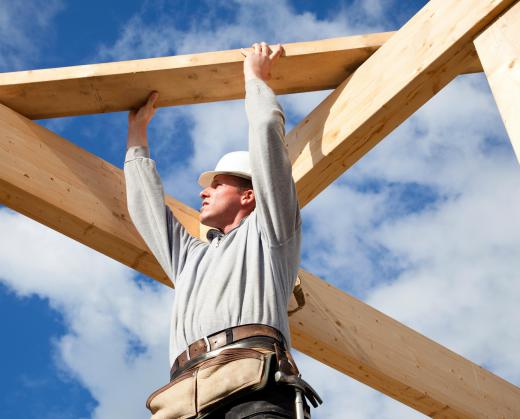Sometimes referred to as panelized or modular homes, a prefabricated house or home is a dwelling that is created in sections or modules within a factory, then assembled on site. Prefabricated homes are often less expensive to construct than traditional homes, while still providing a solid structure that will hold up for decades. This form of prefab construction has become increasingly popular since the beginning of the 21st century and is likely to become even more popular over the next couple of decades.
Prefabricated homes are often constructed using assembly line methods that make use of a set of basic blueprints. A single room usually constitutes one module, and is fully assembled on the plant floor. The modules are then transported to the building site and put into place with the use of cranes and other heavy equipment. Once in place, the modules are joined with the use of screws and glues to seal the joints of the edifice. As a last touch, the wiring and plumbing are put into place and any decorative accents such as chair railing, wallpaper, or molding is added to the rooms.

One of the advantages of prefabricated homes is the lower cost of construction. The modules are usually mass-produced, making it possible for homeowners to choose a house design. The order for the modules is placed, and the individual sections are lined up and connected as they arrive at the building site. This process saves a great deal of cost in terms of labor as well as materials, since manufacturers can take steps to make the most efficient use of the building supplies.

The amount of time it takes to complete prefabricated homes is also a great benefit to many homeowners. Even allowing for the amount of time that it takes to construct the modules, it is still possible to go from an empty lot to a fully functional home in as little as three months. This is in contrast to many situations where building a home using traditional methods could take anywhere from six months to a year before the house is ready for occupancy.
In terms of strength, there are some claims that prefabricated homes are even stronger than houses built using traditional methods. The reason for the added strength is usually attributed to the fact that the modules are connected using screws rather than nails, and that the screws are augmented with the use of industrial strength glues. However, others claim that while a prefab house is at least as stable as any other type of permanent structure, it is hard to determine if it is superior in terms of stability.

